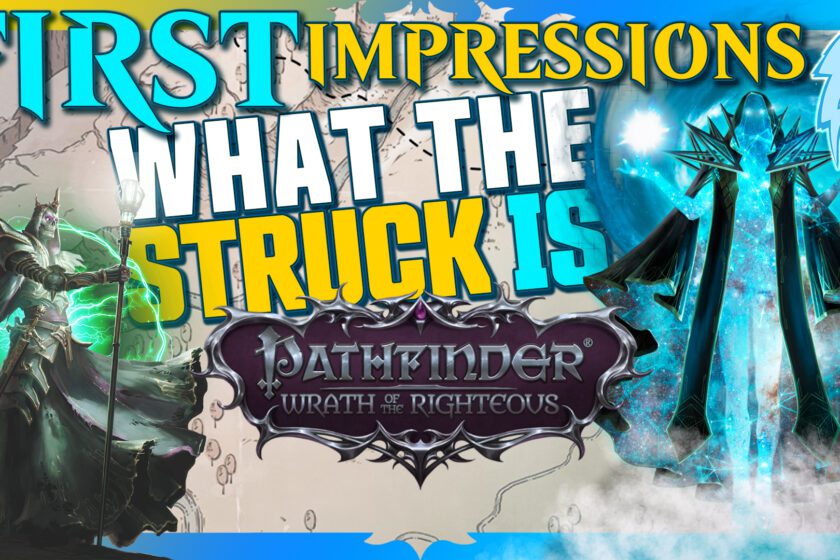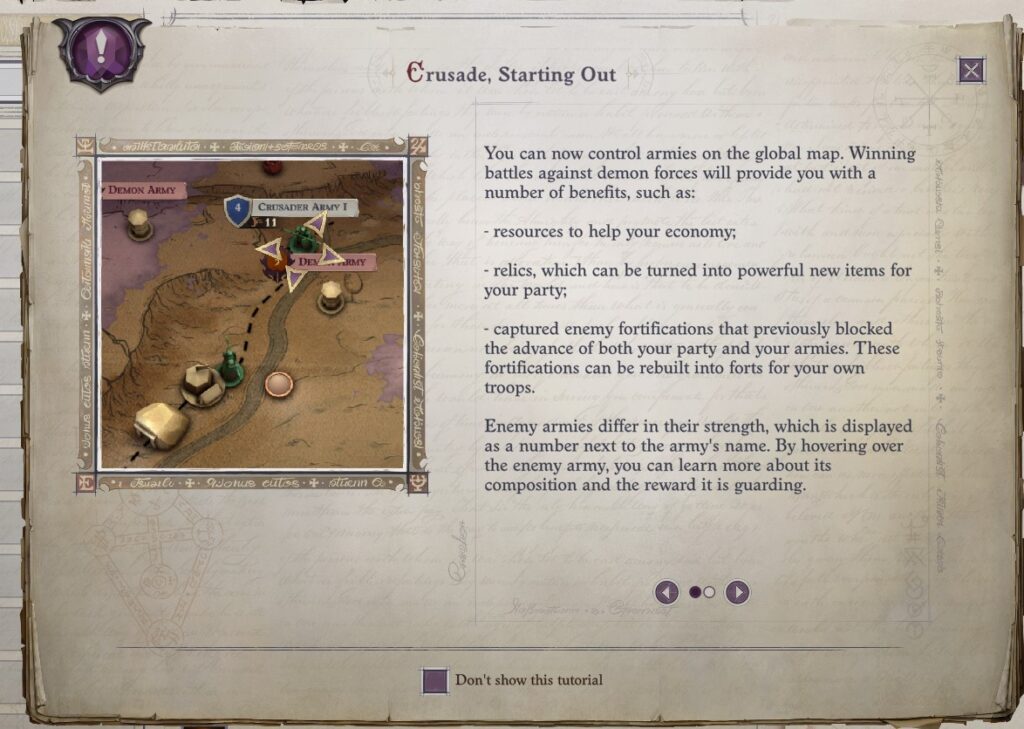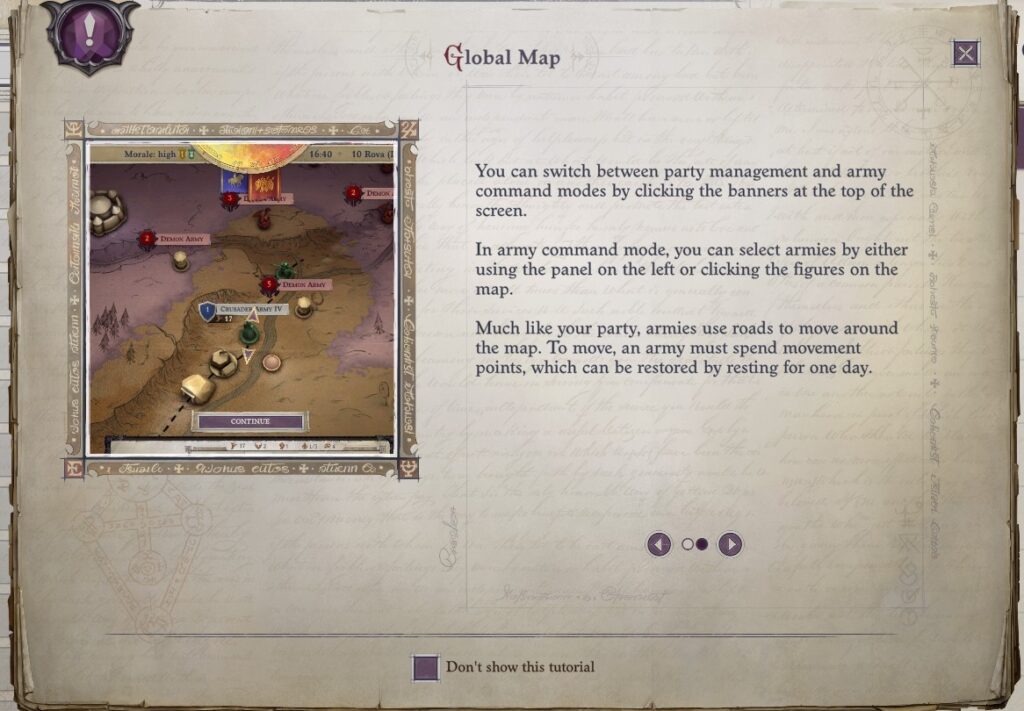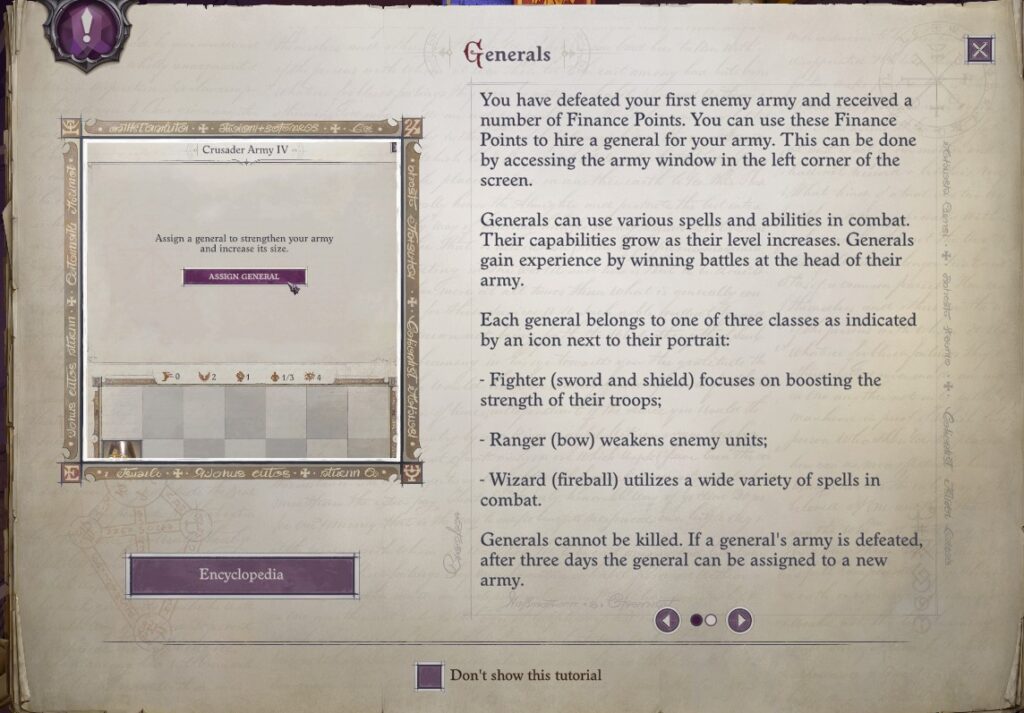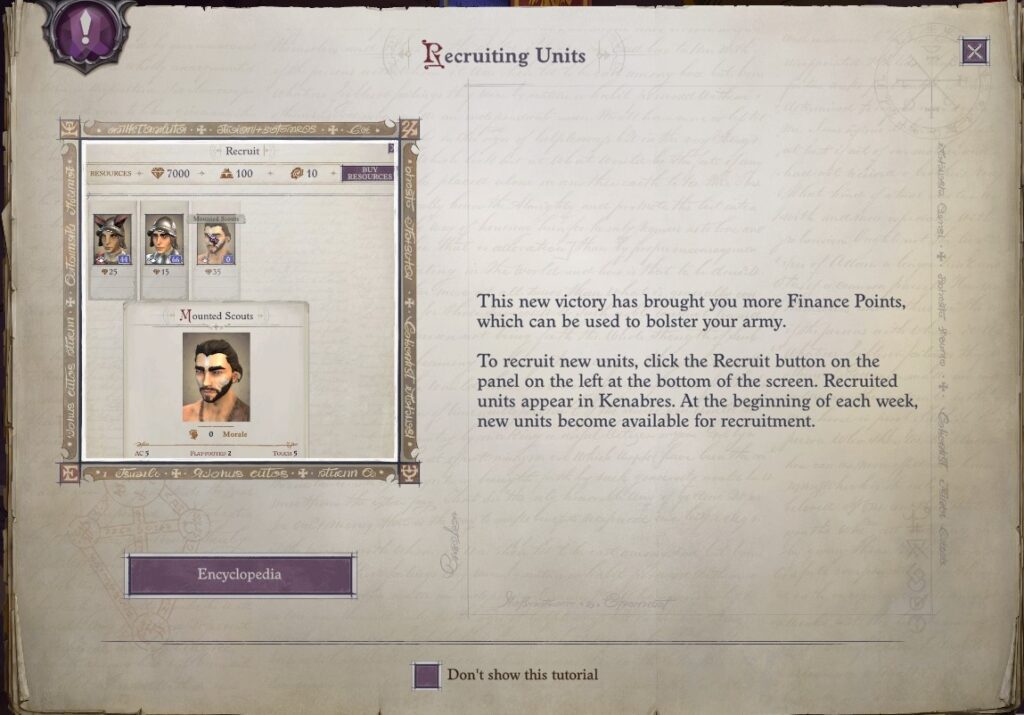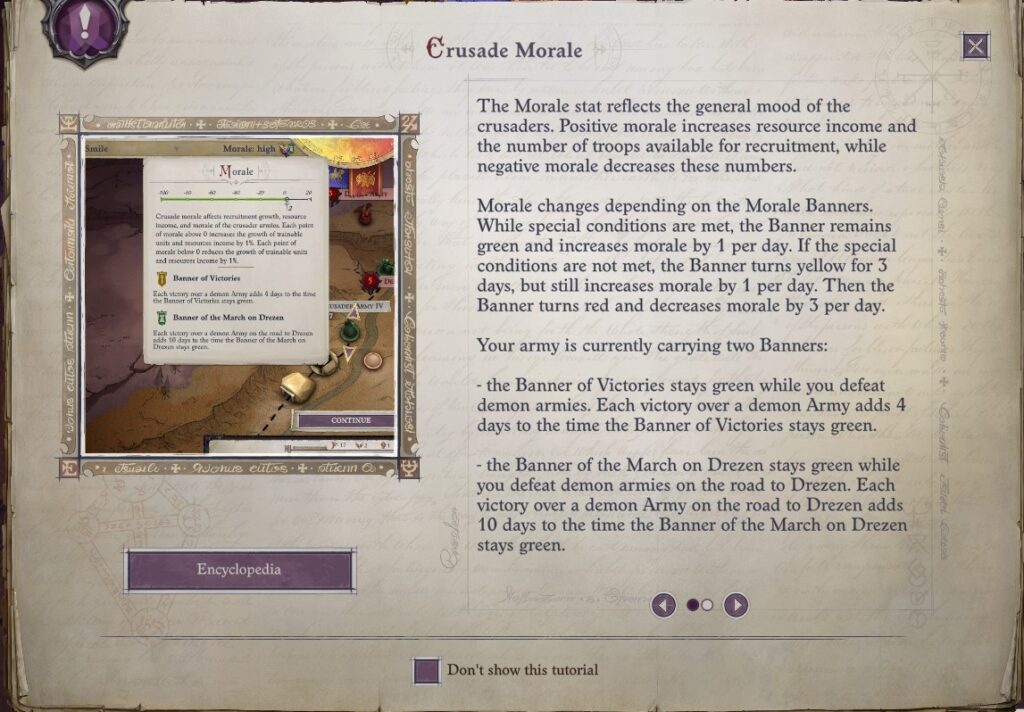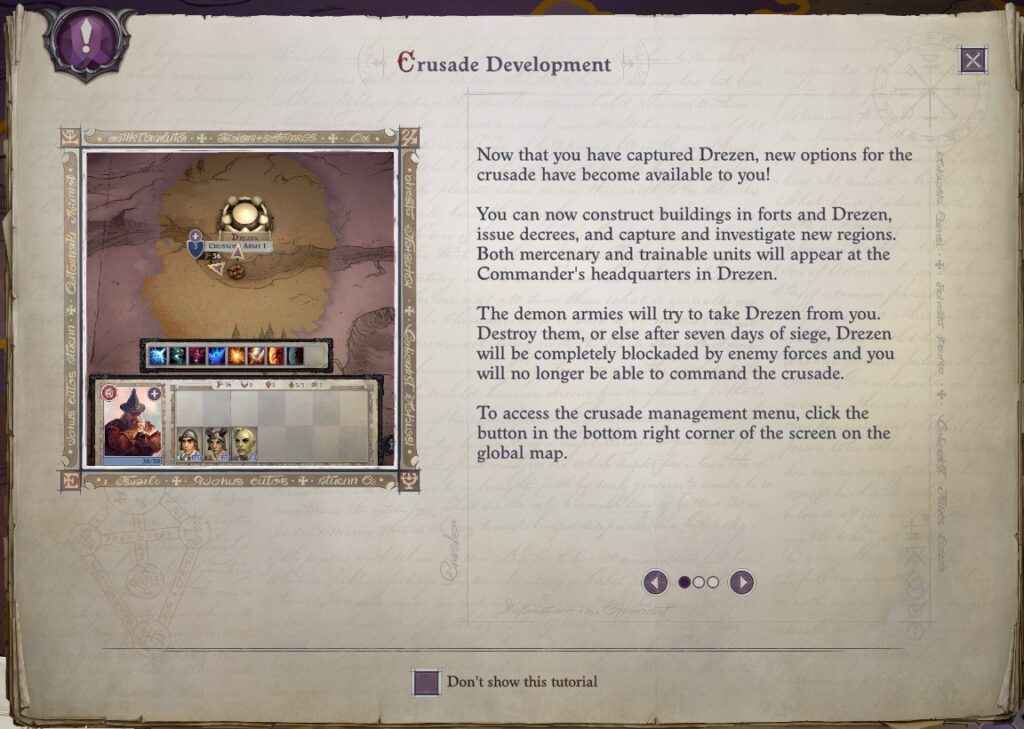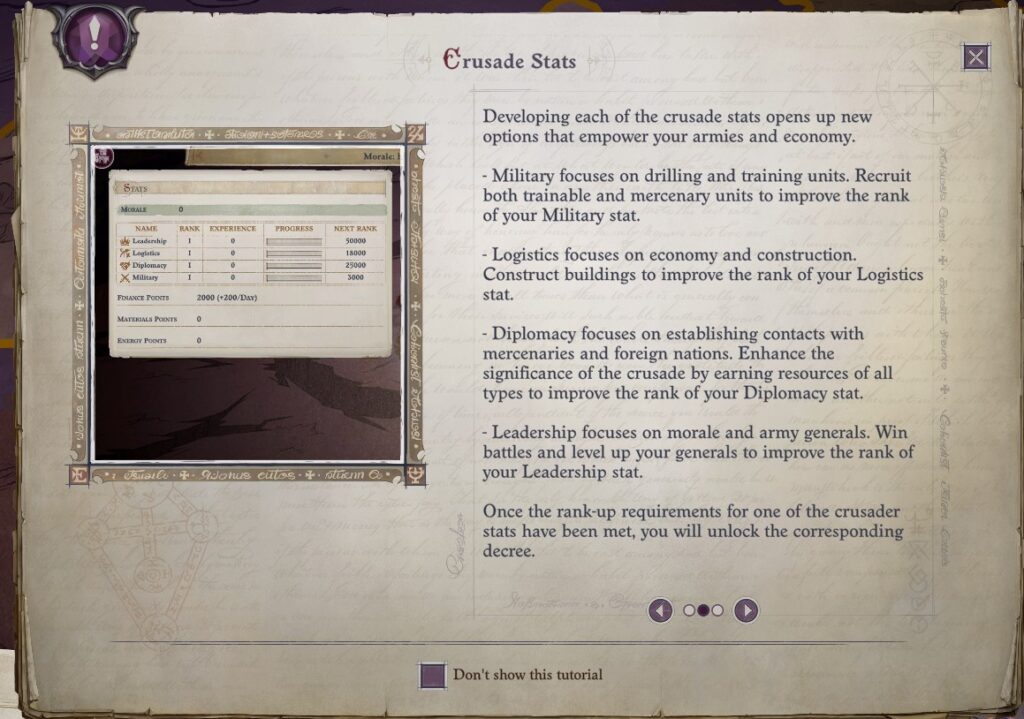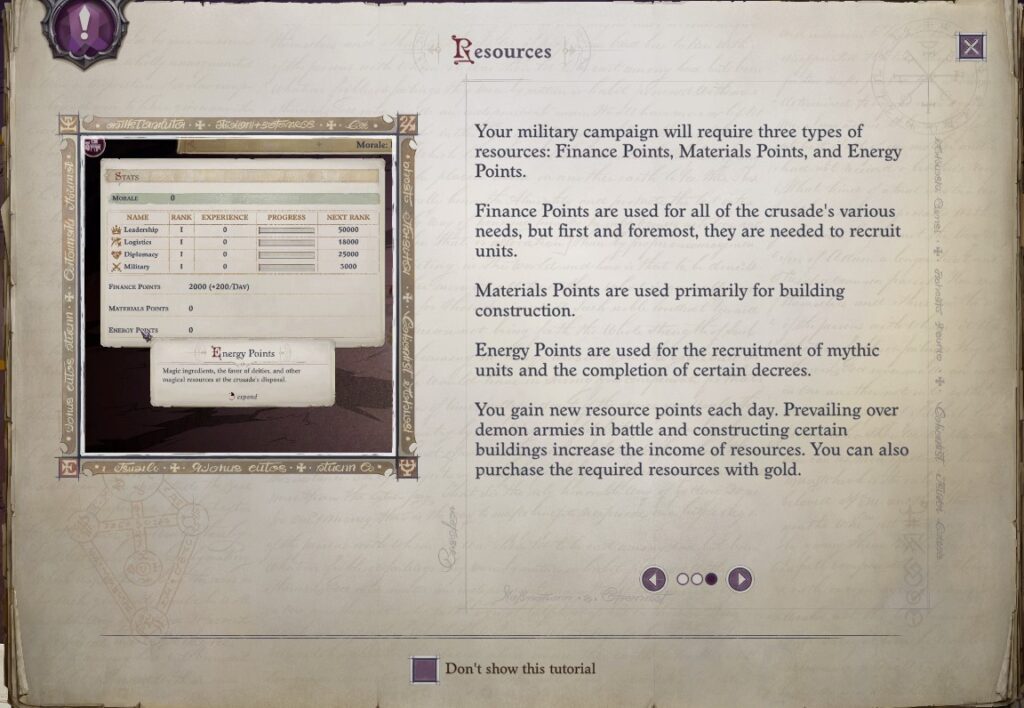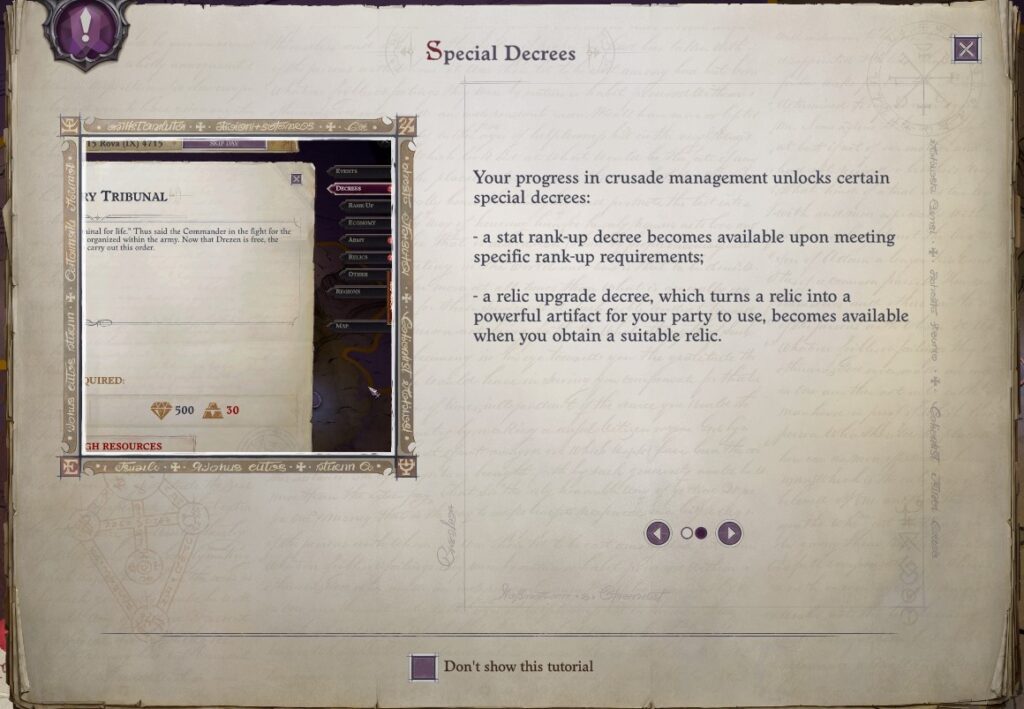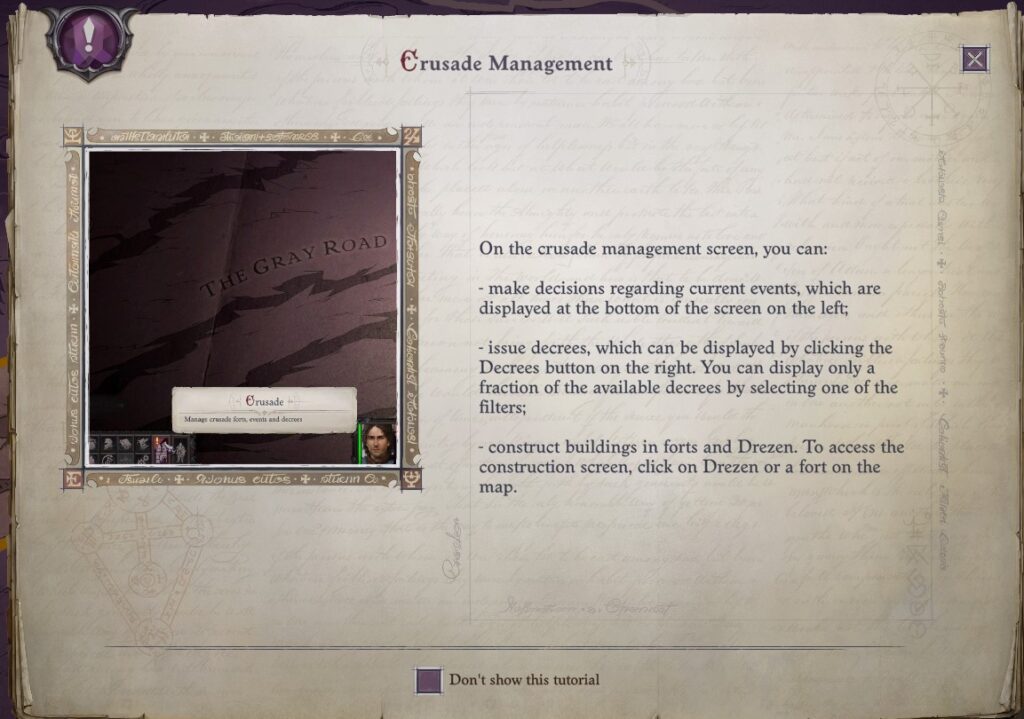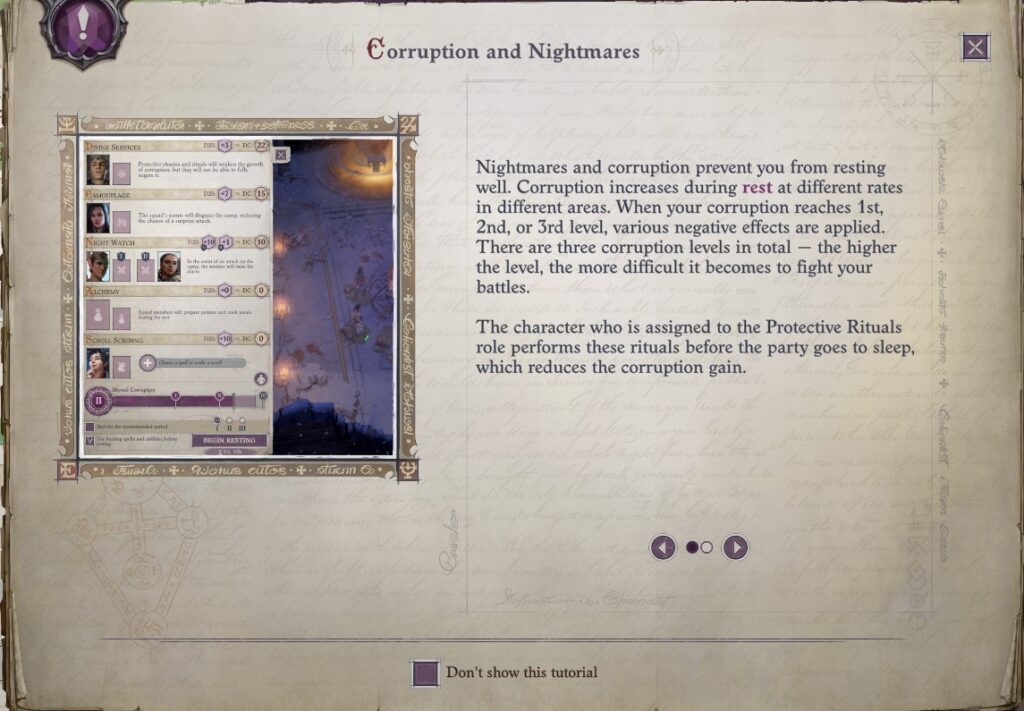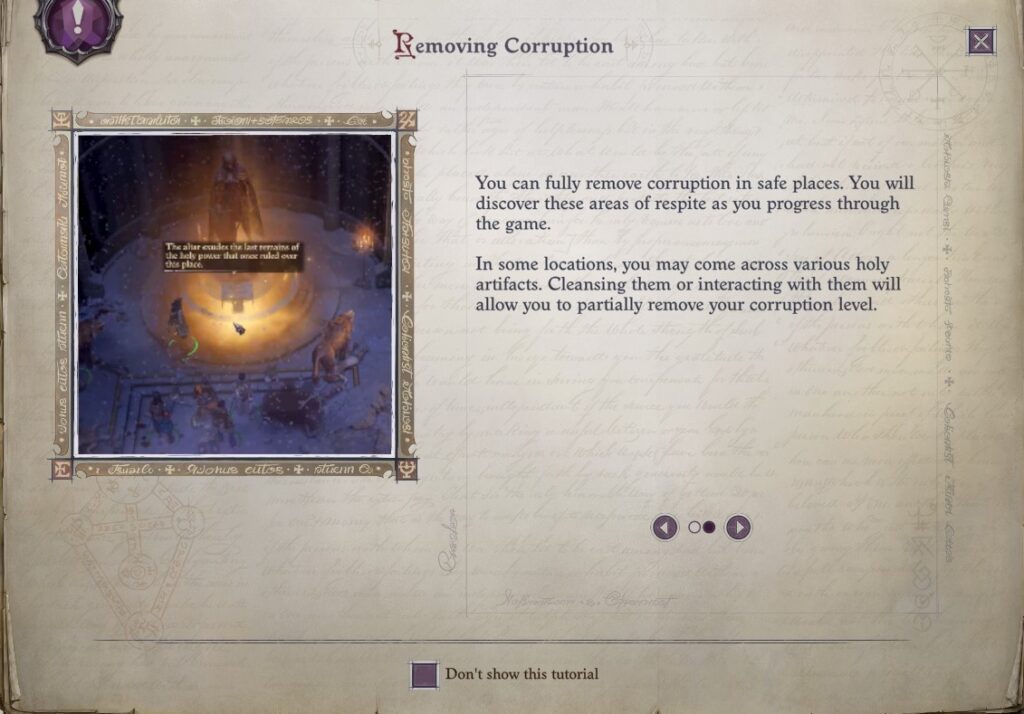What The STRUCK is Pathfinder: Wrath of the Righteous?
(from the creators of Pathfinder: Kingmaker comes a game just as vast and impressive that brings back the things we loved, while adding more new mechanics to keep us busy)
♦ ◊ ♦ ◊ ♦
Pathfinder: Wrath of the Righteous fully launched on September 2nd, 2021 although it’s been alpha and beta testing via Early Access for quite some time. After around more than 40 hours of playing the game I’m ready to share my First Impression and explain “What The STRUCK is Pathfinder: Wrath of the Righteous“.
The game manages to blend RPG & Strategy elements wonderfully by separating various of the game’s systems yet still keeping some sort of connection between them. The best thing about the game’s systems (such as the standard isometric RPG exploration, the crusader mode & the kingdom management/base building) is that all of them seem to fit pretty nicely within the game as precious pieces of a big puzzle. If there’s one thing that Wrath of the Righteous manages to do well, it’s to provide players with a ton depth as well as massive build diversity.
This post could end up getting expanded and updated eventually but, hopefully, for now it includes enough information to serves as a basic guide on top of a first impressions article.
Video Version:
The Story:
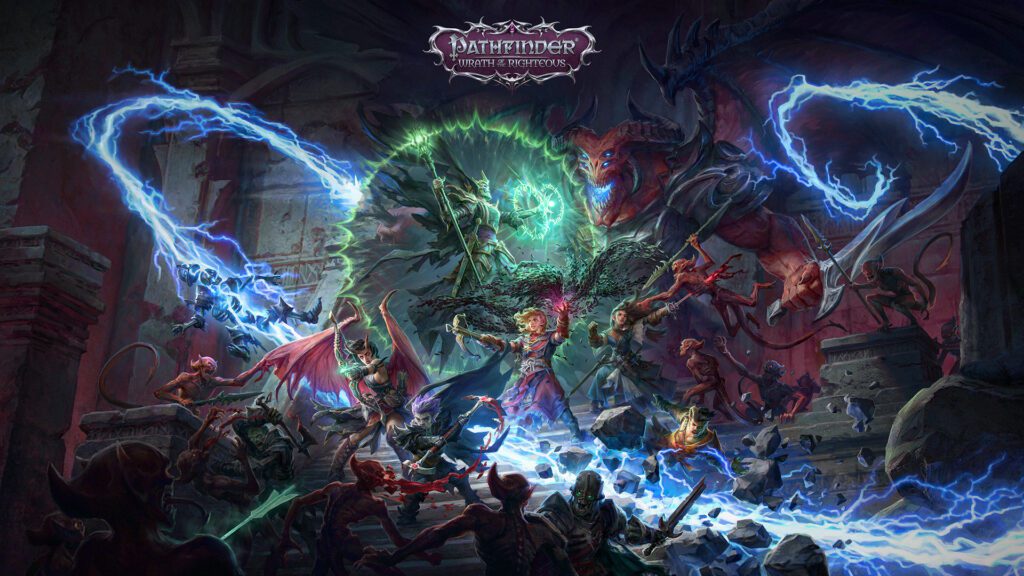
Without spoiling or revealing too much: After selecting your appropriate difficulty (there’s a ton of things to tweak which I LOVE), and going through an incredibly deep character creation/customization, the players start in Kenabres. We are visiting the city for the first time and during our visit the town gets attack (won’t spoil by whom). The attack result in us falling underground (in the caves/tunnels under Kenabres) and as we try to find a way to get back to the surface we’ll meet various characters, some of whom could join our group as allies that we can control. gear up and use to help in fights.
As the story progresses, we’ll keep meeting various characters that are either potential allies, potential enemies, or both because our choices could tilt the game either way. Form your perfect party, and play the game the way you want to, good evil, lawful, chaotic… there will be a lot of moment where we have to make a choice that will influence our alignment, which also will be related to what Mythic Path we can choose. Here’s is some of the official lore background:
The realm of Sarkoris was destroyed when Areelu Vorlesh, a scholar and practitioner of forbidden magics, opened a rift to the abyssal planes of existence, and hordes of demons invaded the world of Golarion. Led by the evil Demon Lords Deskari and Baphomet, the abyssal forces crushed all who stood against them, turning Sarkoris into a demon‑infested land now known as the Worldwound.
Join the Crusade against the demonic invasion and rise as a new hero wielding unimaginable powers in this classic CRPG. The fate of this world lies in your hands.
Quoted from the Official Game Website
Combat Types:
The game features 2 major types of combat: the standard hybrid (turn-based or real-time) combat we know from Kingmaker as well as a new type of strategic turn-based combat for our crusade armies that resembles a simplified version of the combat from Heroes of Might and Magic.
The classic combat where we use our hero + their companions has a real-time mode that still follows some rules where every 3 seconds = a turn to decide how often your heroes can take actions, but it also allows you to pause and tell each hero to do what you want them to then un-pause. This system is amazing for those easier fights vs easier opponents that don’t pose much of a threat.
The Crusade Mode combat pits our army vs the opponents army on a grid field where we place out units in the first 2 rows on the left, while the enemies are on the right. It’s fully turn-based and features army generals (that don’t directly fight as units on the field but can use spells, and skills to damage enemies, buff our army stacks, heal them, etc.). There doesn’t seem to be a limit of how many units can go in a stack other than availability, but generals do have various limitations, such as a default army size of 3 stacks (can increase that number with passives) as well as the energy (which is used for some spell and skills). Since players can have multiple armies and assign generals to each of them this allows for having an army dedicated to stay near the main base (Drezen) in case it gets sieged, while other armies attack and invade the demon-infested lands.
World & Map Size:
The world is vary vast and there’s going to be a lot of points of interest to unlock as we progress through the story. This image below shows all of the regions from a wider, zoomed out view:
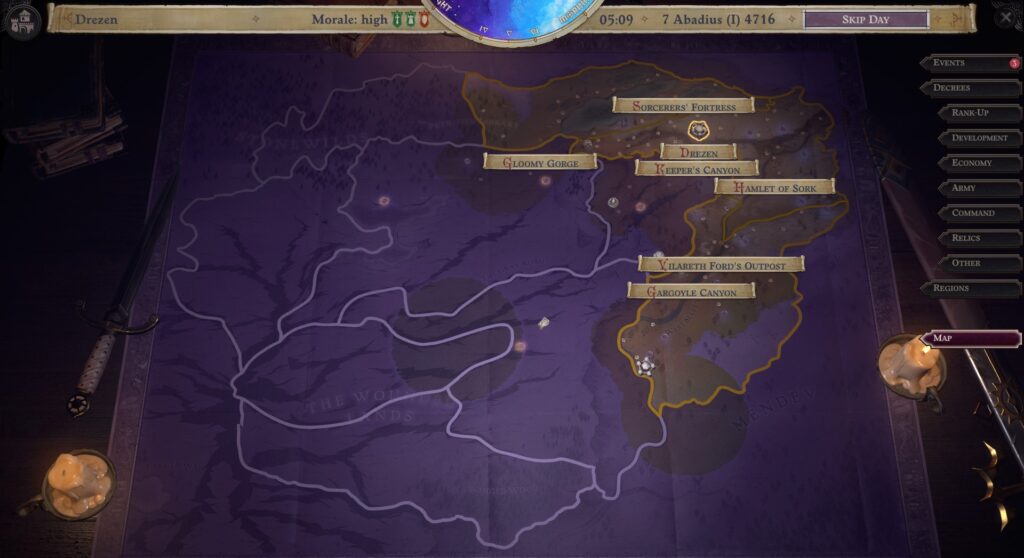
Around the map you’ll have various random encounters as well as see a lot of points of interest that will eitehr be connected to a quest or have some secret loot, or contain puzzles that need to be solved. Those can be crypts, dungeons, caves, forests, villages, forts, bases, and much much more. Some of them will have certain NPCs you can talk to while others will just contain enemies & loot.
Character Creation:
The first things we’ll need to pick is our hero/character. We can either select from six (6) pre-generated characters or make a custom one. When making a custom hero, there’s are a few things to consider: Class, Race, Ability Scores, Skills, Alignment, Background, Deity we follow, as well as standard things such as: appearance, voice, portrait and name.
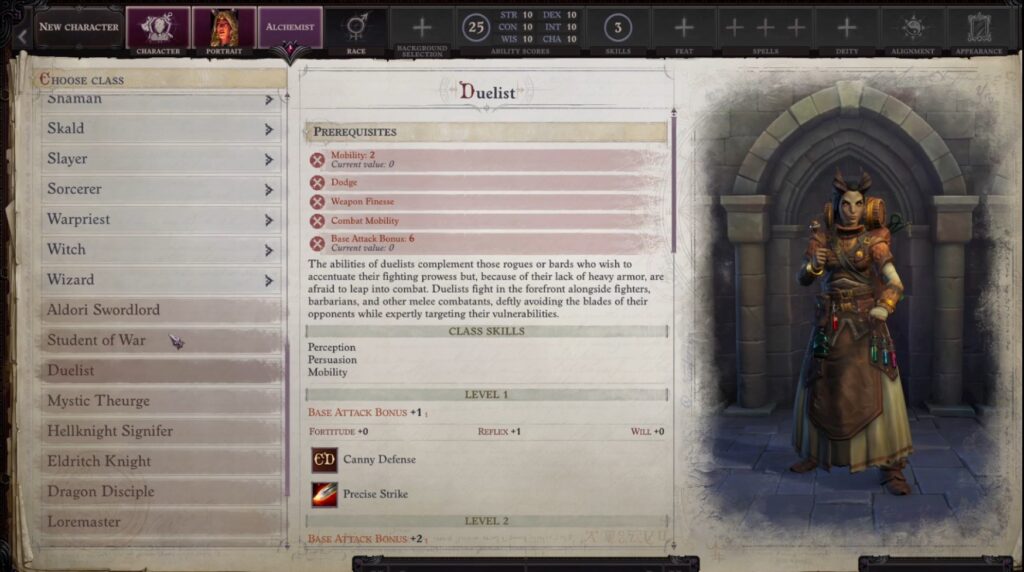
There are 38 classes, 13 of which are Prestige Classes. Each class has a few subclasses/archetypes (4, 5, 6), which results in a TON OF build diversity considering how many different passive skills and abilities one can take. More about build diversity in the next section/segment. Each class and subclass has their own unique playstyle and offers a different experience. Prestige Classes are a more special/advanced version of the standard classes. To unlock a prestige class, players will need to reach lvl 5 as well as meet certain pre-requisites.
In terms of race, there are 12 different ones, with some of those offering a choice of heritage (for example, Kitsune can be a Keen Kitsune or just Kitsune, which provides different negative and positive attribute bonuses). Each race grants various passive traits and skills and some of those could be negative or a mixture or a positive and a negative effect. Some races also grants you proficiencies with that race’s weapons.
Once you’ve picked a class, subclass, and a race, comes the stat allocation , skill points, and feats selection. Since this a not the actual in-depth guide I’m planning to make we’ll not talk in detail about those.
Build Diversity:
As I mentioned above, there are 38 classes, 13 of which are Prestige Classes. Each class has a few subclasses/archetypes (4, 5, 6). This obviously means a ton of build diversity when you consider that each combination you pick will make you choose various feats and skills/spells as you level up. Then you add the items layer. We have to consider what armor to wear (heavy/medium/light/none), as well as the special procs/effect some of the gear gives, + the stats some items grant us and the depth keeps growing the more one gets into build-making. Thankfully, there are no randomly generated unique items so you’ll know that item XYZ will always be found in chest A or dropped by monster B so gearing up builds on second play-troughs should be easier.
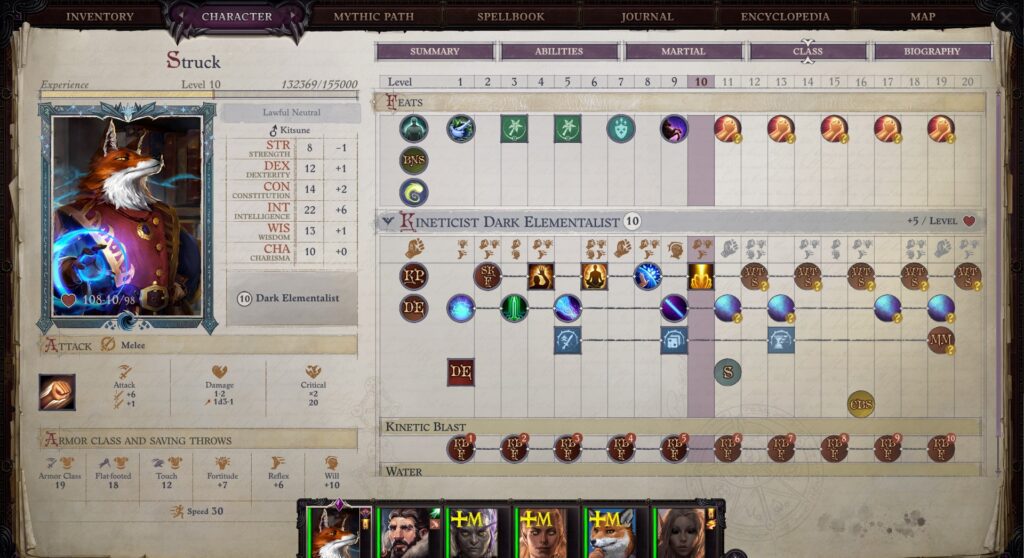
A major part of the build diversity will come from what one does when they level up in terms of feats picked, spells unlocked, spells placed in one’s spell book slots for each level, and how one allocates their attribute points. Sure, gear definitely adds the finishing touches, but the base skeleton comes from the levelup choices.
Mythic Paths:
There are a total of 10 Mythic Paths in Pathfinder: Wrath of the Righteous. Each path will allow you to improve your hero in unique ways, adding a new layer to character development and making your hero and their allies a true match for their powerful enemies.
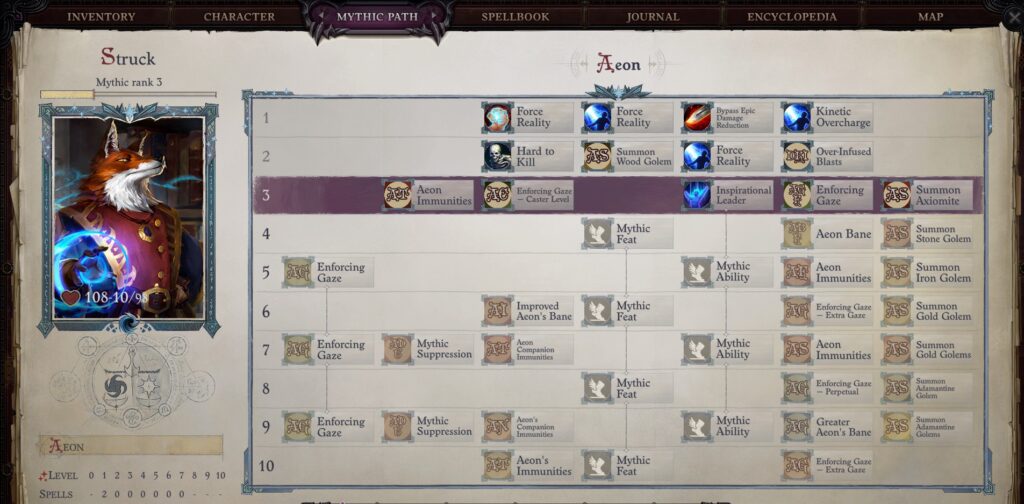
In order to unlock these mythic paths, players will first need to make contact with their respective energies. Then, (usually around the end of Chapter 2) upon reaching Mythic Level/Rank 3 you will be able to ACTUALLY choose a path. Before that, you will be able to only invest points into Mythic Hero for the first mythic two levels, and this starts right after you liberate the Gray Garrison. The Mythic Path energies can be found in the locations below. Each of those will require you to select the right dialogue option when given the choice:
- Aeon: Unlocked at Market Square during Chapter/Act 1, you need to observe/interact with the place where the dragon (Terendelev) was killed.
- Angel: Unlocked In the tunnels under Kenebres, in the place that you first meet Wenduag & Lann. You will need to interact with an Angel’s sword to unlock it.
- Azata: To unlock this, players must find and rescue all 3 of the Desnan NPCs from the Starward Gaze quest, after that, in the chapel/temple, you’ll need to pick the Azata related option (to sing alongside them).
- Demon: Unlocked in the Shield Maze. It’s around the exit where you find a bunch of cultists who have kidnapped young mongrels to turn them into servants. Players will then be able to interact with this energy once more when they first lead the crusade’s armies into the Worldwound.
- Devil: For this one players MUST FIRST CHOOSE Azata or Aeon. After re-capturing Drezen, we will be contacted (via an audience) by a Melies (who is a low-ranked devil). Players will need to pick him as an advisor and agree to his propositions. Eventually, after the players come back from abyss, Melies will show up once more to offer us an opportunity to be a devil. NOTE: Players will need to pass several Diplomacy checks to complete Mellies’ trial.
- Gold Dragon: You have to pick up/loot Terendelev’s scales (from the Market Square) and her Claw (in the cave of Lerper’s Smell, in a crushed cart.) Next, player need to get to Terendelev’s Lair and complete The Dragon’s Fate. Eventually, later in the game, players will meet Hal again and will have to be good to him in order to unlock the path.
- Legend: This is only available after reaching Mythic Rank 8.
- Lich: Can be unlocked in the Lost Chapel underground. Note that you MUST return the wand you found in Leper’s Smile to the Lich you encounter there.
- Swarm-That-Walks: To unlock this you need to make sure that, at the beginning of Chapter 2, players MUST NOT take The Queento join them on the crusade. Then, after Leper’s Smile, we’ll need to take a sample of some insect goo from the Queen Vescavor. This goo need to be used in the battle for Drezen and if The Queen is on the crusade with us then she overrules our orders and cancels the action.
At the start of Chapter 3, players will receive a quest to locate another Queen Vescavor in Drezen. She can be found in one of the houses and it’s IMPORTANT NOT to kill her.
Later, when they beat Xanthir Vang, players should ask him how he became a swarm and pick up his notes (located in that room). This unlocks a new crusade project which will take 14 days. Needless to say, you’ll have to complete that project. That will start a cut-scene/audience where Anevia she will tell you that your companions are worried about your researching of swarms. Player MUST NOT PICK the “I don’t know what came over me” option. Any other will be fine. - Trickster: In the Blackwing Library, you will need to pose as a superior of the cultists in order to make them fight each other.
Important things to keep in mind:
- Only your main character will be able to choose a mythic path, while your companions will be able to just select between a set of mythical feats and abilities. However, there is an exception: the Trickster ability can allow you to share some of your mythic path powers with your companions.
- Mythic path has soft alignment restrictions, after you picked one path, there will be a quest to ask you realign yourself if you don’t meet the requirement. You can still use the powers you already have, but may fail the mythic quests that provide further mythic progress.
- The mythic levels are separate to the regular character/hero levels. Players will be able to get to level 20 of their main hero + companions’ classes while leveling separately the mythic ranks. Mythic levels can only be increased while doing certain main quests.
- After you get to close to Mythic Path Rank 8, you would be able to do a quest that lets you to re-pick some of the choices made as well as unlock late game paths like the Gold Dragon + unlock more mechanics that are connected to Mythic Paths.
The chosen Mythic Path also has a big influence when it comes to the Crusade Armies. Based on what actions you do and your alignment, some allies may decide to leave the Crusade, while other new ones may choose to join you.Mythic Paths will be triggers for various events that will alter the late game experience of your playthrough. This will also affect the relationships you have with your companions, even the ones that are your Crusade advisors.
Loot & Inventory:
The inventory is pretty advanced with a lot of various Quality of Life added to that system. You have a shared stash that is limited by the total wight your main hero & their companions can carry as well as each character (even some summoned companion that can be used as mounts or just to fights alongside your group) has their own inventory where you’ll find 12 equipment slots + two more weapon slots. There are also 4 separate weapon slot “groups that” you can hotswap between. The 12 equipment slots are as follows: Headgear, Eyes (Goggles, Mask), Cape, Ring 1, Ring 2, Bracers (separate from Gloves), Amulet, Body Armor, Shirt, Belt, Gloves/Gauntlets, & Boots.

Crusade Mode:
The Crusade Mode is an extra new layer of fun that did not exist in Kingmaker. Here players will take control of their own Crusade armies and battle hordes of demon in order to close the Worldwound. You’ll be able to move multiple armies around the map and attack demon armies in order to re-capture crusade forts and free up paths to new explorable lands and points of interest.
When your army encounter an enemy army you have two choices: auto-battle (which yields terrible results but can still be toggled on if needed) or manually fight them. Manual combat pits our army vs the opponents army on a grid field where we place out units in the first 2 rows on the left, while the enemies are on the right. It’s fully turn-based and features army generals (that don’t directly fight as units on the field but can use spells, and skills to damage enemies, buff our army stacks, heal them, etc.). There doesn’t seem to be a limit of how many units can go in a stack other than availability, but generals do have various limitations, such as a default army size of 3 stacks (can increase that number with passives) as well as the energy (which is used for some spell and skills). Since players can have multiple armies and assign generals to each of them this allows for having an army dedicated to stay near the main base (Drezen) in case it gets sieged, while other armies attack and invade the demon-infested lands.
The gallery below shows some of the in-game tutorials that explain in detail how certain crusader mode aspects work:
Kingdom/Crusade Management:
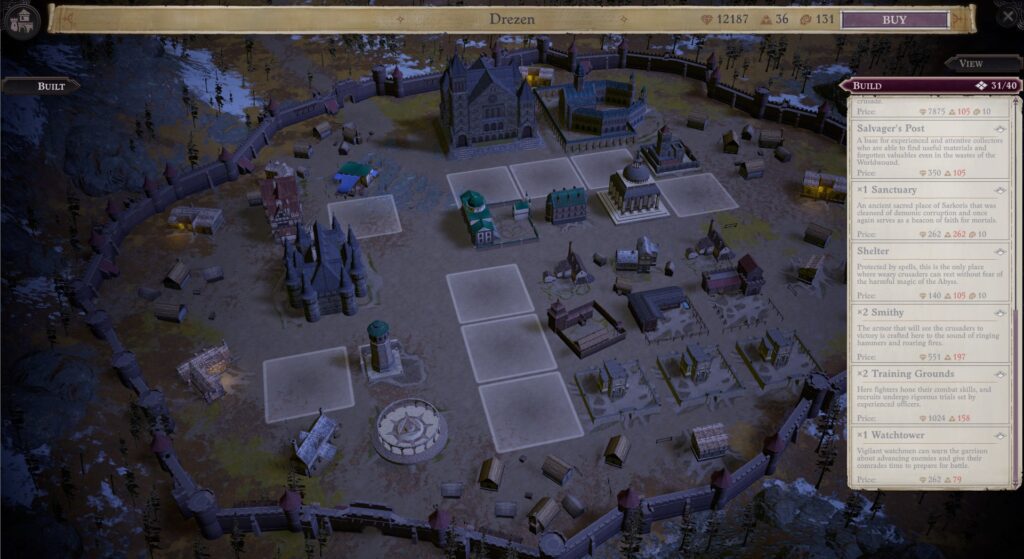
The kingdom management system is similar to what we had in Kingmaker but with a twist – it now is tied to the Crusade Mode in many ways. You can build certain structures in each of your forts, based on how big that fort/outpost is. Various buildings will boost your crusade army stats such as how many units of what type you can recruit each week, buffing all unit’s stats, reducing the cost of recruitment and much more. Some of the buildings you’ll only be able to build once per fort or once ever while others you could have multiple version of. Some buildings will increase the earning of the various crusader mode resources that exist: recruitment points, materials, energy points.
The gallery below shows some of the in-game tutorials that explain in detail how certain crusader mode aspects work:
Audiences:
After capturing Drezen, you will often have audiences with various visitor in your citadel/command room. Many of those will unlock new quest and points of interest for you to discover and explore. Some of those audiences will be as a result of a certain decree or event that one has done during the Crusade/Kingdom Management. Some of the choices you make during those will have big impact on the game’s outcome, while others will directly impact your crusade armies, resource gains or structures.
Exploration:
There are 3 types of exploration: exploring with your group via the isometric mode while inside a point of interest, exploring with that same group outside of those points of interest on the big map, and exploring with your crusade armies to fight the demon forces.
Each of those 3 has its own things to consider such as crusader armies having a limited movement point fro each day, while your main group can move on the big map as much as you want them to but it takes time to move between points A and B, which results in exhaustion and the need to rest to avoid stat penalties. Resting now includes a corruption mechanic that players need to pay attention to to avoid more penalties. Resting in a safe spot like a town (if you have the right building there) will reduce corruption, while resting out in the open on the big map will result in gaining corruption. There are special safe places that you interact with to reduce the corruption without need to rest as well. You can refer to the two images below that are from the in-game guide:
PROS & CONS:
PROS
- Vast & Beautiful World
- It’s Medieval + Fantasy
- Multiple Deep Combat Systems
- Solid VFX, SFX, & OST
- A TON OF Build Diversity
- Amazing Itemization System
- A TON OF Loot Diversity
- A TON of Quests & Side Quests
- A lot of useful NPCs & Game Systems
- Option to use auto-mode for Crusade Mode
- Choices MATTER a lot
- A TON of QoL (more to be desired still)
CONS
- no crusade mode difficulty adjustments/toggles
- windowed made has a border
- some things/systems could use better explanation
- some descriptions are missing (it’s a bug)
- can not switch from managing one fort to another directly
♦ ◊ ♦ ◊ ♦
This concludes my 2-in-1 First Impressions + Basic Guide for Pathfinder: Wrath of the Righteous. If you’re interested in the game below are links to the various platforms where one can buy it (you can just click the links to open a new tab):
Platforms
Epic Games Store [this is a creator link and I get a bit of profit if you use it. You can also use STRUCKTLF as a creator code to generate some revenue for me for some games, this one should now be included too]

